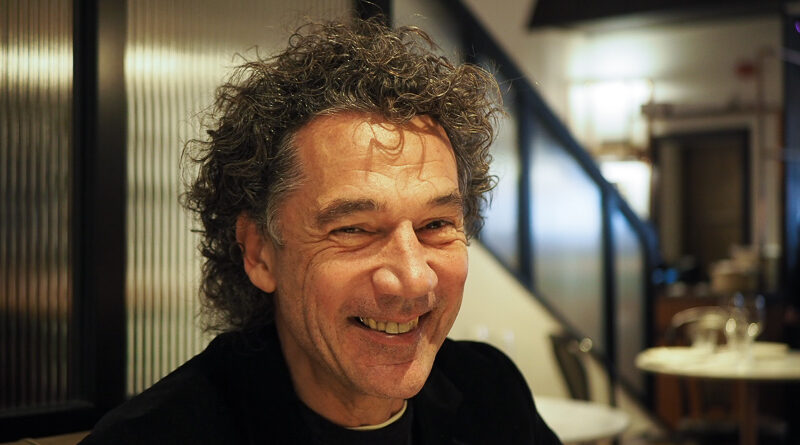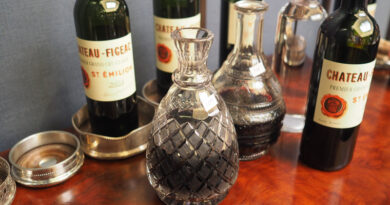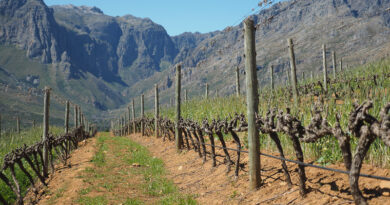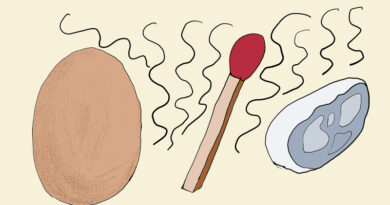Jean Claude Mas, of Paul Mas: a Languedoc wine entrepreneur
Website: https://www.paulmas.com/en/a-propos/jean-claude-mas/
Paul Mas is one of the Langeudoc’s most astute wine producers. Established as recently as 1999 by Jean Claude Mas, this is a source of some of the best value for money wines in the market, and you can find them in most supermarkets as well as independent wine merchants. Jean-Claude describes his operation as old world but with new world attitude, and he’s managed to do something relatively rare in France: making quality wines at a scale that fits in with modern routes to market. Each year I’m one of the jury for the Sud de France top 100, and it’s uncanny how often we unbag the trophy winners after judging and one or two of his wines are in the line-up. I caught up with him in London to hear his story, and taste through a selection of the Paul Mas wines.
Jamie Goode (JG): How did you start? What prompted you to do something that is a little bit at odds with what takes place in the region?
Jean Claude Mas (JCM): I was born in what I call a grape farm – my father was running vineyards, but not making wine for bottling – they were making bulk wine. You have to remember that in the 1960s the way the Languedoc wine would be sold would be on price. The more tonnage a grape grower would do, the better price he would get. The negociants would take 50% Langeudoc wine, 50% Algerian wine, and blend them together.
JG: The negociants were buying wine, but presumably a lot of the coops were making wine too?
JCM: The coops were making wine since 1937 but there were also private growers like my father who made bulk wine, which was sold to a negociant. The negociant would take 50% Languedoc wine and 50% Algerian wine and blending it together and sell it in the 1 litre bottle to the supermarket. They would sell to the north of France where there would be a lot of workers in the fields, or with meals, or in the mines. This is the time where people would drink 5 litres per day of 7% alcohol wine.
JG: So there was a balance between production or consumption that sort of worked.
JCM: Yes, and the balance would always depend on the ability to fight against mildew and so on. It was only production oriented.
JG: Presumably there would have been a lot more Aramon grown then?
JCM: Yes, Aramon, Carignan and Cinsualt, to make this type of wine. My father was in this mentality. As always with this mentality, when you are born in a place like this you want to do something else. You escape, go to university, see the world and try to get a job that’s much more interesting than making bulk wine. This is what happened to me. I left in 1982 and then did preparatory school in Lyon, then I went to Nancy and then I did an MBA at Aston University. This was a very good MBA school.
JG: So you got into business?
JCM: At the end of my MBA I needed to do an internship, and I worked with this company where the guy in charge of finance was friends with another guy who wanted to create a company to import organic wines. So we went to the Languedoc and found a few guys who were working organically. This company started in May 1986, and in August 1986 I needed to do my military service and I was sent to Miami. I was sent as a trade attache. I lived two years there. Before leaving, the Miami branch of Cartier offered me a job. I had to go back to France to see my family, and when I came back the job had been taken. Instead they offered me the position of product manager for Mont Blanc, but they still had to acquire the company. So I went back and looked for another job, and one of my passions has always been car racing and the car industry. So I joined Motul in 1990 in sales and marketing. I saw what was happening in the wine industry, and that wine was becoming a leisure drink rather than a food product, and the estate of my family was not adapted at all.
JG: Why do you think the Languedoc was so slow to adapt in that period? Is it just very hard to change the mentality of producers?
JCM: When you explain to a grower that they have to reduce their crop by two-thirds to obtain quality: good luck! We have always been taught since prehistory that we needed more yield to eat. In the Languedoc, still today, there are more Chateaux than in the Médoc. At the beginning of the 20th century the rich guys were in the Languedoc.
I was with Motul. I’d go back to my house and the windows weren’t closing. It was a disaster so I decided I had to join the wine business. To do this when you are not a technician, no one is interested in you. Except one guy, Bernard Magrez. I joined his company in 1992 and learned a lot, thanks to his marketing skill, but also thanks to a technician I was working with. I even created my own wine in this company. I was doing about 50 containers in Asia with this. I lasted three years.
During harvest 1995, my father was selling grapes to a winery and the owner asked me to come and work with him. I asked, can you pay my salary? He said no, but we can find some arrangement. I got some stock options, and a salary 25% lower than I was currently being paid. This was 1996. It was Domaine de Virginie, and they were big in the UK. They made the gold label Chardonnay for Marks & Spencer, selling 4 million bottles a year. I was taking care of exports, and grew this company from 1 m Euros to 60 million Euros. The guy sold the company to Castel in 1999, and I created my own company. I began selling wine from my family, just 10 000 bottles. Then I got a contract from Domaine Astruc who were supplying the likes of Duboeuf and Skalli.
In the 1990s the Languedoc was doing well in the UK. The new world didn’t exist, but in the beginning of the 2000s the new world took over all the position of the Languedoc in the UK and USA. This is when I started.
In 2002 the Astruc guy said he was selling his company, and it was 80% of my supply. I said your company is three times your size, I can’t afford it. But we found an arrangement thanks to my MBA competence. I took over the company in December 2002. I cut some of the volume. From contracted grapes they were producing basically what I needed. But then they were selling a lot of en vrac. I stopped all that. I started from nothing: when I started, the family estate was doing 120 000 Euros turnover, in 1999.
My philosophy was old world wines with a new world attitude. If you want to have a wine with some style, you have to control things from the grape to the bottle. You have to master the viticulture, winemaking, ageing, bottling and marketing. I went from the glass to the viticulture.
JG: You had the hardest part, selling the wine. Unless you are tiny, you need to start with the route to market. Then you work back to the vineyards.
JCM: Yes, that is exactly what happened. My luck is that I knew viticulture well without knowing it because I was born in it. When I was a kid I would go in the vineyards, pruning, picking. Many years after when my father died I realised that I had a big chance to be so in tune, linked with viticulture.
JG: What is your model now? Do you own some vineyards?
JCM: Basically, from that day, when I realised that to make a good wine you have to control the grapes, I said I need to expand my vineyards. From 35 hectares I took it to 850 hectares owned. Then there are 1500 hectares from contracted growers. I have eight vinification sites, with 15 different estates. I manage my company like a school of fish, not like a whale. Each place has its own DNA.
JG: What sort of trends are you seeing? What’s your recent direction been?
JCM: The big change today is unveiling terroir in the Languedoc, rather than trends. I can show you terroirs that no one is talking about.
JG: How do you feel about Picpoul?
JCM: It is made from a grape that has no interest. We made it famous. The ingredients for great white wine in the Languedoc: first, machine harvesting. Second, control of temperature. Third, control of oxidation. This changed the world of white wine in the Languedoc. Piquepoul, Terret, Ugni – they were all oxidative grapes that were bought to make Noilly-Prat. The first thing is control of the oxidation. The second thing is Mèze and Marseillan on the Etang de Thau were 6000 and 1500 people 30 years ago and now they are 11 000 and 7000. All the people who came here were opinion leaders with nice houses. It is an outstanding place. And the oysters have existed there since the Romans, and we needed something to go with it. Picpoul. The wine itself, you are not going to compare it with a Gruner Veltliner or a Sauvignon from New Zealand or an Albarino from Spain. It doesn’t have the DNA of a serious wine. We made it up. Fine.
Do you think there’s going to be a move away from varietal labelling? Is there a chance for the Languedoc to create brand equity in its terroirs?
We do a Languedoc white that is now the fifth best selling wine in Sainsbury’s. We re-invented Languedoc white with a serious approach. The big disadvantage with Picpoul is that what kills the brand story in the Languedoc is the co-ops. 90% of Picpoul production is from co-ops. Believe me, they will manage to kill the brand. They are our big weakness, contrary to Italy where the co-ops are very strong.
THE WINES
Paul Mas Vermentino 2020 Pays d’Oc, France
Vermentino came to the Languedoc in 1841, and is prized because it is resistant to drought. This wine retails for £7-10 in the UK. ‘It is a top variety for us in this segment,’ says Jean Claude Mas. Pear, spice and citrus fruit, with a linear quality and good precision. Lovely fruit, with a slight grainy edge. 88/100
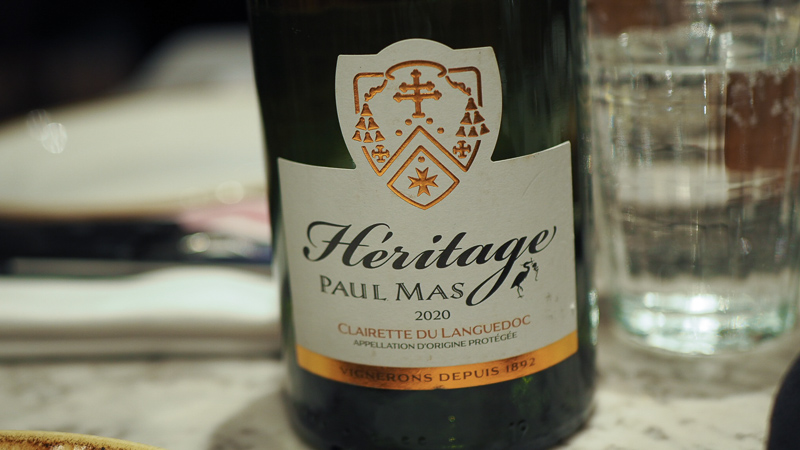
Paul Mas Heritage Clairette du Languedoc 2020 France
12.5% alcohol. This is a grape variety well suited to the region, and there are about 40 different Clairettes within a 20 km radius because it adapts to its locality. Textured, mineral and fine with a lovely crystalline quality. There’s lovely fruit with a hint of pepper and some flowery notes. 91/100 (£9 Sainsbury’s)
Paul Mas Esprit de Crès Ricards Marsanne Roussanne 2020 Pays d’Oc, France
13% alcohol. 20% fermented and aged in new oak. Textured, broad and slightly buttery, with a smooth texture and some peachy fruit. Rich and bold, showing some nuttiness. 91/100 (£12.50 Oddbins)
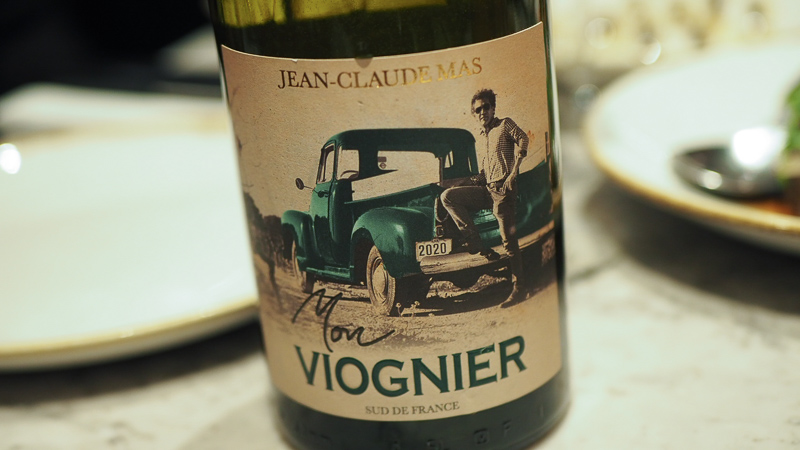
Mon Viognier by Jean-Claude Mas 2020 Pays d’Oc, France
13.5% alcohol. Lovely aromatics here with apricot, pear and citrus. Textured and broad with nice balance. Shows flesh and depth with good fruit and a hint of aniseed. 92/100
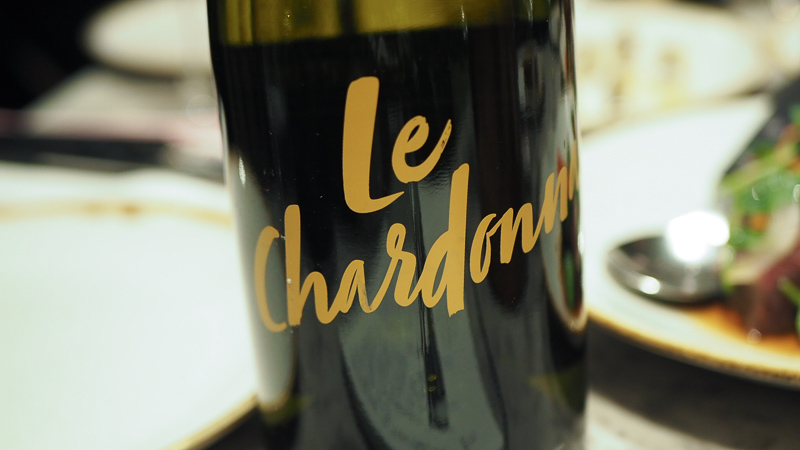
Paul Mas Le Chardonnay L’Artisan 2020 Pays d’Oc, France
Concentrated and powerful with lovely lime and pineapple notes, as well as a hint of toast and nuts. Lovely fruit here, and nice acid line. There’s a spicy savoury twist that adds interest and complexity. 92/100
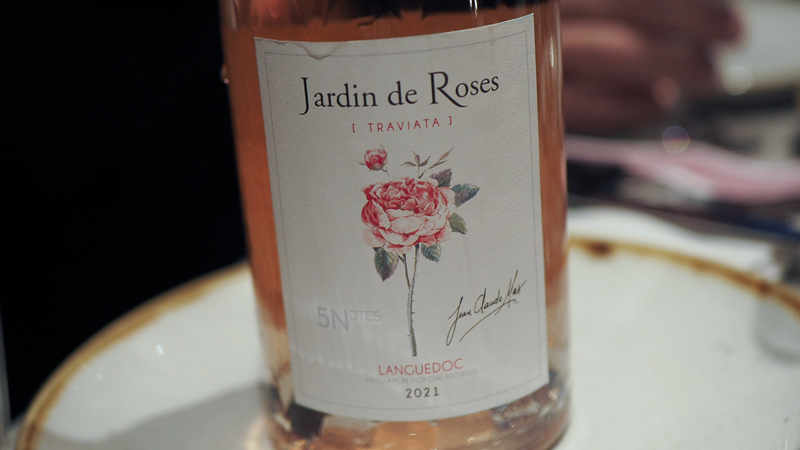
Paul Mas Jardin de Roses Traviata 2021 Languedoc, France
Pretty, fine and expressive with lovely citrus, some cherry notes and good acidity. Crystalline and dry with nice detail. 90/100 (£13.99 Waitrose)
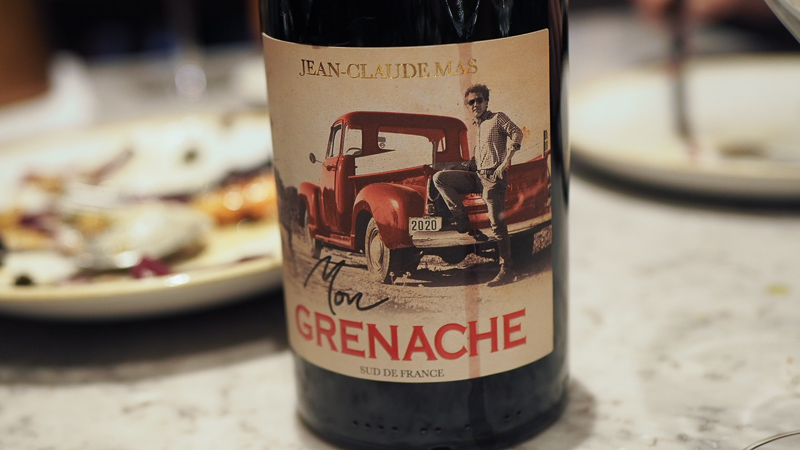
Paul Mas Mon Grenache L’Artisan 2020 Pays d’Oc, France
13.5% alcohol. Organic. Fresh and floral with raspberry and cherry fruit. This is crunchy, and it’s juicy and bright with lovely freshness and purity. 93/100
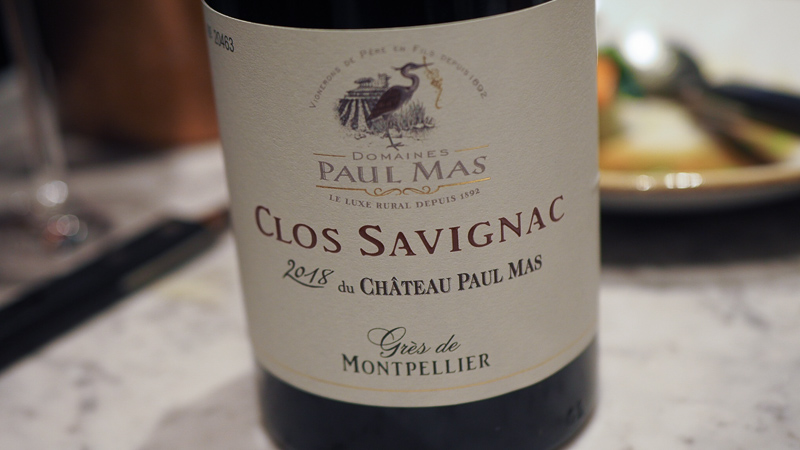
Paul Mas Clos Savignac 2018 Grès de Montpellier, France
14.5% alcohol. A blend of Syrah and Grenache from a 3 hectare hillside vineyard on limestone soil. Sweetly fruited and generous with a floral edge to the ripe, textured plum and cherry fruit. There’s a fresh acid line, and this is textural and expressive, showing supple bright fruit. 93/100
Paul Mas Clos Savignac 2019 Grès de Montpellier, France
Supple, bright and textural with a slight chalky edge to the fresh cherry and plum fruit, with a lovely grainy structure. This has depth but also freshness. Textural, grainy and delicious with a bit of grunt. 93/100
Domaine des Verrières Pierre Plantée 2018 Languedoc, France
15% alcohol. Mainly Syrah. Ripe, textured and finely spiced with a grainy edge and some liqueur-like richness. There’s a slight saltiness, and despite the elevated alcohol it has some freshness. Very stylish. 91/100
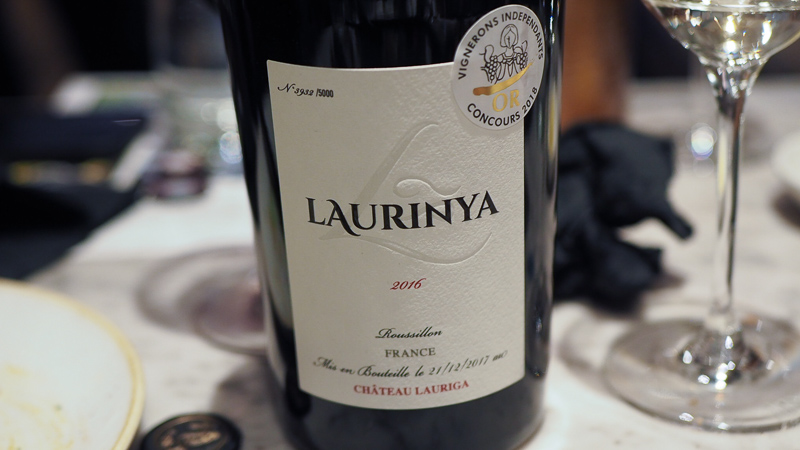
Château Laurinya 2016 Roussillon, France
15.5% alcohol. A blend of Syrah and Grenache. Ripe, lush, tarry and spicy with lovely intensity. Broad and expressive with hints of spice and tar. 92/100
Find these wines with wine-searcher.com

